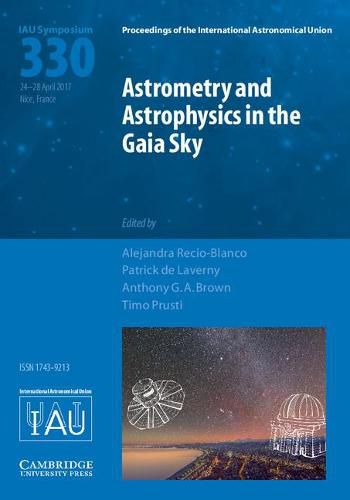Readings Newsletter
Become a Readings Member to make your shopping experience even easier.
Sign in or sign up for free!
You’re not far away from qualifying for FREE standard shipping within Australia
You’ve qualified for FREE standard shipping within Australia
The cart is loading…






Astrometry has historically been fundamental to all the fields of astronomy, driving many revolutionary scientific results. ESA’s Gaia mission is astrometrically, photometrically and spectroscopically surveying the full sky, measuring around a billion stars to magnitude 20, to allow stellar distance and age estimations with unprecedented accuracy. With the complement of radial velocities, it will provide the full kinematic information of these targets, while the photometric and spectroscopic data will be used to classify objects and astrophysically characterize stars. IAU Symposium 330 reviews the first 2.5 years of Gaia activities and discusses the scientific results derived from the first Gaia data release (GDR1). This significant increase in the precision of the astrometric measurements has sharpened our view of the Milky Way and the physical processes involved in stellar and galactic evolution. To many, the Gaia revolution heralds a transformation comparable to the impact of the telescope’s invention four centuries ago.
$9.00 standard shipping within Australia
FREE standard shipping within Australia for orders over $100.00
Express & International shipping calculated at checkout
Astrometry has historically been fundamental to all the fields of astronomy, driving many revolutionary scientific results. ESA’s Gaia mission is astrometrically, photometrically and spectroscopically surveying the full sky, measuring around a billion stars to magnitude 20, to allow stellar distance and age estimations with unprecedented accuracy. With the complement of radial velocities, it will provide the full kinematic information of these targets, while the photometric and spectroscopic data will be used to classify objects and astrophysically characterize stars. IAU Symposium 330 reviews the first 2.5 years of Gaia activities and discusses the scientific results derived from the first Gaia data release (GDR1). This significant increase in the precision of the astrometric measurements has sharpened our view of the Milky Way and the physical processes involved in stellar and galactic evolution. To many, the Gaia revolution heralds a transformation comparable to the impact of the telescope’s invention four centuries ago.